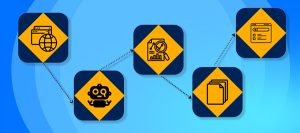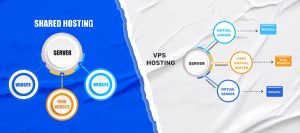Starting a blog can be an exciting venture, whether you’re looking to share your thoughts, promote a business, or create an online portfolio. This comprehensive guide will take you through each step of the blogging process, from choosing the right platform to monetizing your content.
1. Understanding the Purpose of Your Blog
Before diving into the technical aspects, it’s crucial to understand why you want to start a blog. Your purpose will shape your content, design, and marketing strategies. Here are some common motivations:
- Personal Expression: Many bloggers use this platform to express their thoughts, experiences, and creativity.
- Business Promotion: Blogs can serve as a valuable marketing tool to promote products or services and engage with customers.
- Portfolio Development: A blog can showcase your skills and work, making it easier for potential employers or clients to find you.
- Community Building: If you have a specific interest or hobby, a blog can help you connect with like-minded individuals.
By clarifying your goals, you can tailor your blog accordingly.
2. Choosing the Right Blogging Platform
Once you’ve defined your purpose, the next step is to choose a blogging platform. Here are some popular options:
- WordPress.org: This is a self-hosted platform offering full control over your blog. You can customize themes, use plugins, and monetize your content.
- WordPress.com: A hosted version of WordPress, suitable for beginners. However, it has limitations on customization and monetization unless you opt for a paid plan.
- Blogger: A straightforward platform owned by Google, ideal for beginners. While it’s user-friendly, it lacks the flexibility of WordPress.
- Wix or Squarespace: These platforms offer drag-and-drop interfaces, making it easy to design your blog without coding knowledge.
Consider factors such as ease of use, customization options, and scalability when selecting a platform.
3. Picking a Hosting Provider
If you choose a self-hosted platform like WordPress.org, you’ll need a reliable hosting provider. Here are some things to consider:
- Bandwidth and Uptime: Look for a host that offers sufficient bandwidth and a high uptime percentage to ensure your blog remains accessible.
- Customer Support: Opt for a host that provides 24/7 support, especially if you’re a beginner and may need assistance.
- Security Features: Ensure your hosting provider includes security measures like SSL certificates and regular backups to protect your blog from cyber threats.
- Scalability: Choose a host that allows you to upgrade your plan as your blog grows.
Some popular hosting providers include Bluehost, SiteGround, and HostGator.
4. Finding the Right Niche
Selecting a niche is a vital step in establishing your blog’s identity. A well-defined niche helps you attract a specific audience and differentiate yourself from competitors. Consider the following when choosing your niche:
- Passion and Interest: Write about something you love or are knowledgeable about. Your enthusiasm will come through in your writing, making your content more engaging.
- Market Demand: Research trending topics and keywords related to your niche. Tools like Google Trends or SEMrush can help you identify popular subjects.
- Audience: Define your target audience. Who are they? What are their interests and pain points? Tailoring your content to their needs will increase engagement.
5. Selecting a Blog Name and Domain
Your blog name is your brand identity, so choose something memorable and relevant. Here are some tips:
- Keep It Short and Simple: A shorter name is easier to remember and type. Avoid complex spellings.
- Reflect Your Niche: The name should give readers a hint about your blog’s content. For example, if you’re blogging about food, consider incorporating culinary terms.
- Check Availability: Ensure your chosen name is available as a domain and on social media platforms. Websites like Namecheap or GoDaddy can help you check domain availability.
Once you’ve settled on a name, register your domain through a reputable registrar.
6. Setting Up and Designing Your Blog
Now that you have your platform, hosting, niche, and domain, it’s time to set up your blog. Here’s how to do it effectively:
a. Install Your Blogging Platform
For platforms like WordPress, you can usually install the software with one click through your hosting provider’s dashboard. Follow the instructions provided by your host to complete the installation.
b. Choose a Theme
Your blog’s theme determines its appearance. Look for themes that are:
- Responsive: Ensure your theme looks good on all devices, including smartphones and tablets.
- Customizable: Choose a theme that allows you to modify colors, fonts, and layouts to reflect your brand.
- Lightweight: A faster-loading theme enhances user experience and boosts SEO.
You can find both free and premium themes on platforms like ThemeForest or the WordPress theme repository.
c. Design Your Blog
Incorporate imagery and effects that align with your niche. Here are some design elements to consider:
- Header and Logo: Create a professional-looking logo that represents your brand. Use tools like Canva for design if you’re not a graphic designer.
- Navigation Menu: Organize your content into categories and ensure easy navigation for users.
- Widgets and Plugins: Use plugins to add functionality, such as social media sharing buttons, SEO optimization tools, and comment sections.
7. Brainstorming Blog Topics
Generating ideas for your blog is essential for maintaining consistent content. Here are some strategies to brainstorm effectively:
- Keyword Research: Use tools like Ubersuggest or Answer the Public to find popular keywords and questions in your niche.
- Competitor Analysis: Look at successful blogs in your niche and identify topics that resonate with their audience.
- Audience Engagement: Engage with your readers through surveys or polls to understand what content they find valuable.
- Personal Experiences: Share your experiences, lessons learned, or challenges related to your niche.
Once you have a list of ideas, narrow them down to focus on topics that align with your blog’s purpose.
8. Writing Your First Blog Post
Now it’s time to write your first post. Here are some tips for creating engaging content:
a. Craft a Captivating Title
Your title should grab attention and hint at the value of your post. Use power words and keep it concise. For example, instead of “Tips for Healthy Eating,” try “10 Simple Tips for a Healthier Diet.”
b. Structure Your Content
Use headers and subheaders to organize your content and make it scannable. This helps readers easily find information.
c. Engage Your Audience
Start with a strong introduction that captivates your readers. Include personal anecdotes, questions, or statistics to draw them in.
d. Edit and Proofread
Before publishing, take the time to edit and proofread your post for grammatical errors and clarity. Tools like Grammarly can help you catch mistakes.
9. Creating an Editorial Calendar
Consistency is key to blogging success. An editorial calendar helps you stay organized and accountable. Here’s how to create one:
- Set Publishing Frequency: Decide how often you’ll publish new posts (e.g., weekly, biweekly).
- Plan Topics in Advance: Schedule your blog topics in the calendar, allowing time for research and writing.
- Include Important Dates: Mark holidays, events, or themes relevant to your niche that you want to cover.
Using tools like Google Calendar, Trello, or Asana can help you manage your editorial calendar effectively.
10. Promoting Your Blog
Once your blog is live, it’s time to attract readers. Here are some marketing strategies to consider:
a. Utilize Social Media
Share your blog posts on social media platforms like Facebook, Twitter, Instagram, and Pinterest. Create visually appealing graphics or snippets to encourage sharing.
b. Engage with Your Audience
Respond to comments on your blog and social media. Engaging with your audience builds community and encourages return visits.
c. Guest Blogging
Reach out to other blogs in your niche and offer to write guest posts. This exposes your blog to new audiences and can drive traffic back to your site.
d. Email Marketing
Create an email list to keep your readers updated about new posts or promotions. Use tools like Mailchimp to manage your list and send newsletters.
11. Monetizing Your Blog
If you’re looking to make money from your blog, consider the following monetization strategies:
a. Affiliate Marketing
Promote products or services relevant to your niche and earn a commission for each sale made through your referral link. Join affiliate programs like Amazon Associates or ShareASale to get started.
b. Sponsored Content
Collaborate with brands to create sponsored posts. Brands will pay you to write about their products, so ensure it aligns with your blog’s values.
c. Selling Products or Services
If you have your products or services, use your blog as a platform to sell them. This could include e-books, online courses, or consulting services.
d. Ad Revenue
Once you have enough traffic, consider displaying ads through platforms like Google AdSense. You’ll earn money based on the number of impressions or clicks.







